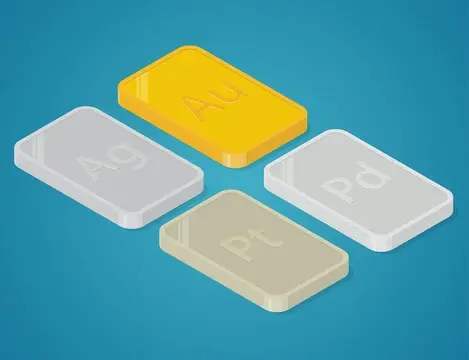Buying gold, silver, platinum, or palladium for the first time can sometimes seem intimidating. But in reality, knowing a few basics is all it takes to start adding physical precious metals to your investment portfolio or collection with confidence.
GOLD AVENUE offers to help you better understand and prepare your precious metal purchase.
Precious Metals Guide
15 minutes read

Key Takeaways
Their reputation as a "safe haven" and a "store of value" plays an important role in the stability appeal of precious metal prices.
Precious metals can be coveted assets by investors to diversify an investment portfolio.
Commercial and industrial demand supports the general demand for precious metals and therefore contributes to maintaining their price stability.